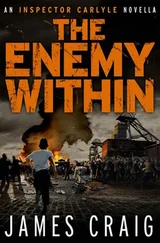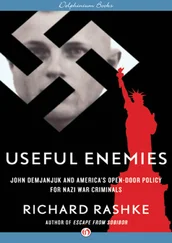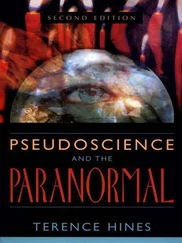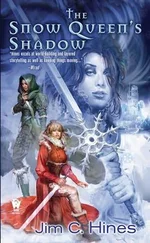George Lansbury visited Moscow and met Lenin in 1920. ‘I shall always esteem it the greatest event in my life that I was privileged to see this fine, simple, wise man’, he wrote in besotted terms in his memoirs. Lenin was ‘a great man in every sense of the word’, who held supreme national power and yet remained ‘unaffected and without personal pride’. Lansbury, who became chairman of the Labour party in 1927 and its leader in 1932, told the party conference at Birmingham in 1928 that the Bolshevik revolution had been ‘the greatest and best thing that has ever happened in the history of the world’. Socialists should rejoice that the ‘fearful autocracy’, which ruled from the Baltic to the Black Sea and from the Volga to the Pacific, had been replaced by that magnificent venture in state socialism, the Soviet Union. ‘The peasants and workers of that great nation, encircled by implacable foes who ceaselessly intrigue, conspire and work to restore Czardom, need our sympathy and help, and we need theirs.’ It was the role of the Daily Herald , thought Lansbury and his lambs, to provide and receive sympathetic help. 8
In August 1920 GC&CS intercepted and deciphered a signal from Lev Kamenev, the Bolshevik revolutionary leader and acting head of the Soviet trade delegation, reporting that he had given to the Daily Herald a subsidy of £40,000 raised by selling precious stones. In return, it was understood that the newspaper would be the mouthpiece of Moscow on Anglo-Russian relations and would support Bolshevik agitation and propaganda against the Lloyd George government. Meynell, the courier used to smuggle many of these jewels, made several visits to Copenhagen to meet Moscow’s star diplomat Maxim Litvinov. The surveillance of these meetings was comically blatant: a window-cleaner appeared on a ladder, and a banister-polisher on the landing, whenever Meynell entered Litvinov’s hotel suite. Once Meynell returned from Copenhagen with two strings of pearls secreted in a jar of butter. On another occasion he posted a box of chocolate creams, each containing a pearl or diamond, to his friend the philosopher Cyril Joad. All these shenanigans were known to Ewer, although it may have been kept from him that £10,000 of the jewels money was invested in the Anglo-Russian Three Ply and Veneer Company run by George Lansbury’s sons Edgar and William. Edgar Lansbury was a member of the CPGB, who in 1924 was elected communist mayor of Poplar. His mother-in-law, Hannah (‘Annie’) Glassman, was used to convert the jewels into cash. 9
MI5 resorted to family connections and social contacts in order to handle Kamenev and the Daily Herald . Jasper Harker had recently married Margaret Russell Cooke at a Mayfair church. She was the sister of Sidney (‘Cookie’) Russell Cooke, an intellectual stockbroker and Liberal parliamentary candidate, who had inherited a fine house on the Isle of Wight called Bellecroft. Russell Cooke had been a lover of Maynard Keynes, whose lifelong friend and business associate he remained, and was the son-in-law of the captain of the Titanic . Virginia Woolf called him ‘a shoving young man, who wants to be smart, cultivated, go-ahead & all the rest of it’. Harker used his brother-in-law to compromise Kamenev. Russell Cooke invited Kamenev and the latter’s London girlfriend Clare Sheridan, who was a sculptor, Winston Churchill’s cousin and a ‘parlour bolshevik’, first to lunch at Claridge’s and then to stay at Bellecroft for an August weekend. Lounging on rugs by the tennis court, Kamenev spoke vividly for over an hour, ‘stumbling along in his bad French’, about the inner history of the revolution in 1917, recounting the ‘secret organizations’ of Lenin, Trotsky, Krasin and himself, and depicting the Cheka’s chief Felix Dzerzhinsky: ‘a man turned to stone through years of travaux forcés , an ascetic and fanatic, whom the Soviet selected as head of La Terreur ’. Kamenev inscribed a poem in which he likened Sheridan to Venus on a £5 banknote. He signed Bellecroft’s visitors’ book with the slogan, ‘Workers of the World Unit [sic].’ 10
Next month, on the eve of Kamenev’s scheduled return to Moscow with Sheridan, Lloyd George upbraided him for his part in the contraband-jewels subsidy. In order to gain political advantage, Lloyd George’s entourage spread the notion that he had given Kamenev peremptory orders to leave the country. The Prime Minister also yielded to pressure to publish the intercepts in order to justify his confrontation with Kamenev, although this compromised future SIGINT by betraying the fact that GC&CS could read Moscow’s ciphered wireless traffic. Journalists duly raised uproar about the Daily Herald diamonds under such headlines as ‘Lenin’s “Jewel Box” a War Chest’. 11
When Kamenev and Sheridan left together for Moscow, Russell Cooke found an excuse to meet them at King’s Cross station, to accompany them on their train and to see them on to their ship. Sheridan’s handbag went missing on the journey, and was doubtless searched. At Newcastle it reappeared in the clutches of Russell Cooke, who claimed to have traced it to the lost luggage office. In Moscow Sheridan sculpted heads of Lenin, Dzerzhinsky, Trotsky, Zinoviev and other Bolshevik leaders. Soon afterwards, the Cheka informed Kamenev that Sheridan had lured him into staying with the brother-in-law and informant of an MI5 officer, and she found herself shunned when she returned to Moscow in 1923. 12
Meanwhile, on 28 February 1921 the Daily Herald published a photograph of an imitation of the Bolshevik newspaper Pravda which was circulating in England. The identifying marks of printers in Luton proved this issue to be a forgery which, as the Home Secretary admitted in the Commons, had been prepared with the help of the Home Office’s Director of Intelligence, Sir Basil Thomson. This trickery was adduced by Ewer, when MI5 interviewed him in 1950, as his reason for starting his counter-intelligence operation. In fact the groundwork had been laid before the forged Pravda incident; but it is true that his network coalesced in 1921. 13
Hayes was the talent-spotter who put Ewer in touch with dismissed NUPPO activists and disaffected Special Branch officers willing to undertake political inquiries. Ewer in turn exerted his jaunty charm to inspire his operatives with team spirit. They wanted to prove that they could do a good job for him, both individually and as a group. Their skills were a source of pride to them. Shadowing and watching in the streets of London was akin to a sport that needed brains as well as agility. Smarting from their dismissals by the Metropolitan Police, they were glad to join an organization that appreciated team-work. The Vigilance brigade of detectives believed in manly self-respect and masculine prowess.
Ewer’s security officer Arthur Lakey had been born at Chatham in 1885. His father came from Tresco in the Scilly Isles: his mother was an office cleaner and munitions worker from Deptford. He worked as a railway booking clerk and in a brewery office before enlisting in the Royal Navy in 1900 and serving on the torpedo training vessel HMS Vernon . He left the navy to join the Metropolitan Police in 1911, but was recalled for war service, and spent eight hours in the sea when his ship was torpedoed in 1916. After this ordeal, he kept to land and was employed as a sergeant in Special Branch. During the NUPPO struggles of 1918–19, Lakey entered General Macready’s office at Scotland Yard, rifled his desk, read confidential papers and reported their contents to NUPPO.
In 1921, while Lakey was in the Doncaster mining district raising relief funds for dismissed NUPPO activists, he was summoned by Hayes to meet Ewer in the Daily Herald offices. Ewer asked him to investigate the circumstances of the Pravda forgery, implying that the inquiry was on behalf of the Labour party. When Lakey tendered his report, Ewer told him that the work had been commissioned on behalf of the Russian government and established that he had no misgivings about undertaking further work for the same employer. He was put in contact with Nikolai Klyshko, who paid the rent of a flat at 55 Ridgmount Gardens, Bloomsbury, where Lakey lived and worked to Klyshko’s orders. Walter Dale and a policeman’s daughter named Rose Edwardes worked with Lakey in Ridgmount Gardens.
Читать дальше












